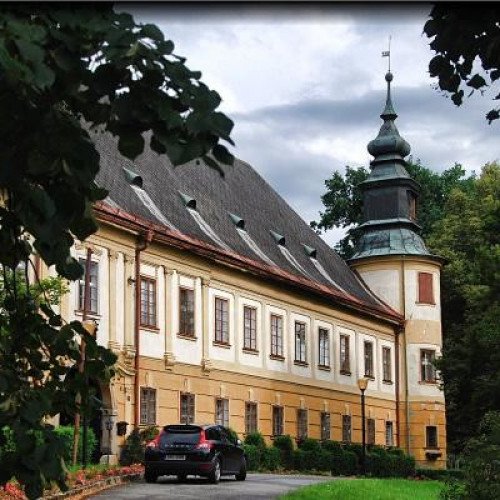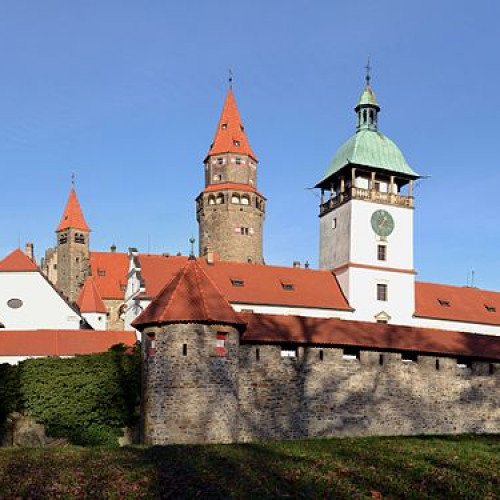Castles of "Czech Republic" BLUDOV CHATEAU vs BOUZOV CASTLE

BLUDOV CHATEAU
Bludov Chateau (Czech: Bludovský zámek) is a Baroque château with Late Renaissance elements, located in town Bludov, northern Moravia, the Czech Republic. A stronghold was established in the place probably in the 1570s. The founder was Lord Jan z Boskovic. After The Battle of White Mountain (1620), the Bludov Manor was confiscated and given to Kryštof Pavel of Liechtenstein who rebuilt the stronghold into a Late Renaissance château. Later, the château was rebuilt in Baroque architectural forms. In 1710, the building was sold to the House of Žerotín (Zierotin), who owns it till today. Bludovský zámek became Žerotín’s permanent residence when Karel Ludvík, the house member, sold the Velké Losiny château in 1802 because of financial problems. Žerotín’s library, picture gallery, archives, and a collection of weapons were moved as well.
Statistics for this Xoptio

BOUZOV CASTLE
Bouzov Castle (Czech: Hrad Bouzov) is an early 14th-century fortress which was first mentioned in 1317. It was built on a hill between the village of Hvozdek and the town of Bouzov, 21 kilometres (13 mi) west of Litovel and 28 kilometres (17 mi) northwest of Olomouc, in Moravia, Czech Republic. The castle has been used in a number of film productions lately, including Arabela, Fantaghirò, and Before the Fall. An eight-storey watchtower, 58 metres (190 ft) high, dominates the complex. The buildings are grouped around it in the form of a horseshoe, and the castle is enhanced by a number of towers, and among other things, bastions, battlements, oriel windows and loopholes. The two long bridges, ending with a short drawbridge, span the deep dry moat around the castle. The knights' hall, armoury, which is in one of the few original rooms with preserved Gothic vaulting, bedrooms of the knights and a neo-gothic chapel with its Gothic altar and tombs occupy the central part of the castle. The valuable furniture comes from the private collection of Eugen von Habsburg and the collection of the Order of the Teutonic Knights. Since 1999 the castle has been a national monument.